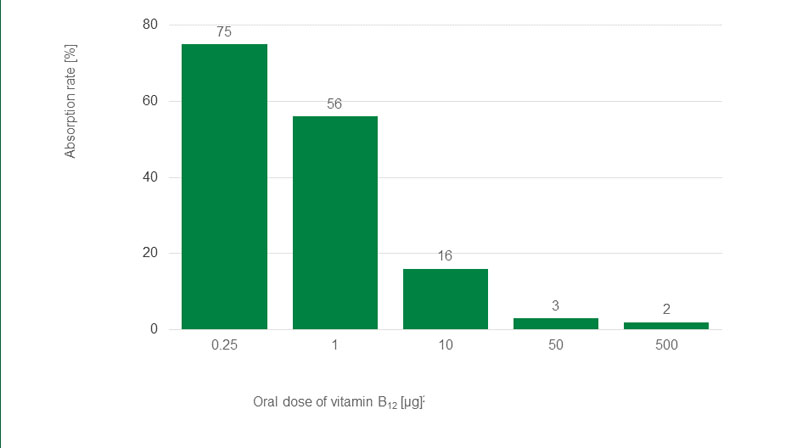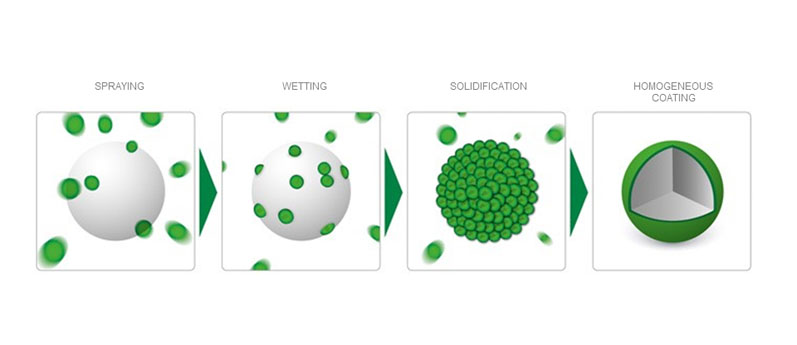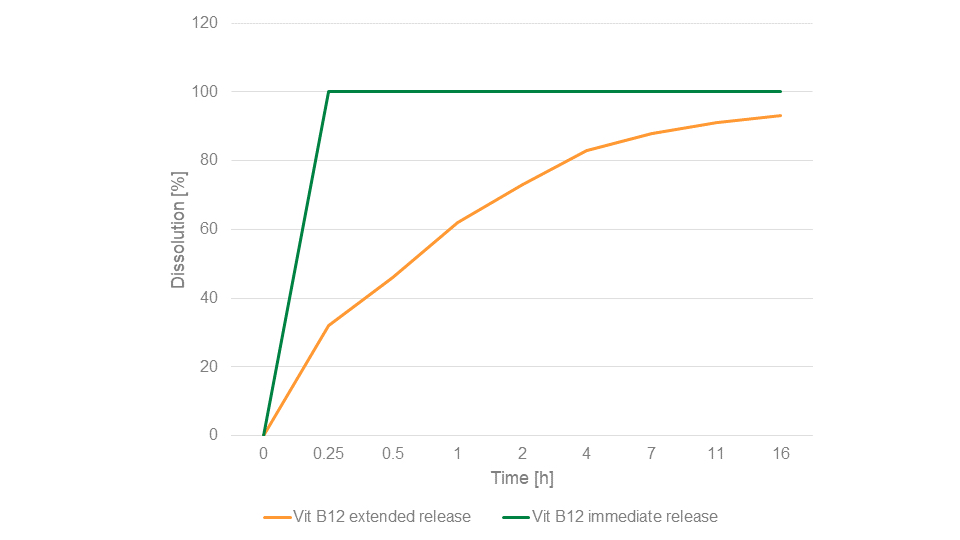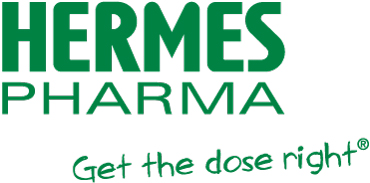Although mild vitamin B12 deficiency can have minimal or no symptoms, severe deficiency can lead to serious complications, such as vision loss, nervous system damage and anaemia. Worryingly, the vitamin B12 supplements that millions of people use each day fail to adequately meet consumer needs, both in terms of absorption and ability to integrate with increasingly hectic lifestyles.
As such, new fit-for-purpose vitamin B12 formulations are urgently needed.
In this article, we outline the factors putting a growing number of people at risk of vitamin B12 deficiency and the limitations of traditional vitamin B12 formulations in terms of addressing consumers’ nutritional and convenience needs. We also discuss how manufacturers are creating novel, extended-release vitamin B12 formulations that overcome these hurdles, offering companies a unique opportunity to better serve their customers.
Battling vitamin B12 deficiency: a growing challenge
Vitamin B12 deficiency has many causes, from chronic medical conditions such as pernicious anaemia and Crohn’s disease to the long-term use of certain medications such as proton-pump inhibitors. However, several trends are putting more people at risk of vitamin B12 deficiency around the world.
Perhaps most notable is the rise of the plant-based diet, which has seen an explosion in popularity in recent years. One study showed plant-based food sales grew three times faster than total food sales in 2021.1 As vitamin B12 is primarily found in animal-derived foods, the greater adoption of plant-based diets naturally puts more people at risk of vitamin B12 deficiency.
A rapidly ageing population is also cause for concern. By 2050, the World Health Organization (WHO) expects the proportion of the world’s over-60 population to jump from 12% to 22% compared with 2015.2
In the elderly, vitamin B12 deficiency is particularly common as many older adults don’t produce enough hydrochloric acid in their stomach to absorb the vitamin B12 that’s naturally present in food.3
Importantly, oral vitamin B12 supplementation plays an important role in reducing the risk of diet-related B12 deficiency.4 Accordingly, the Vegan Society, along with several health professionals and organisations, recommend that vegans take a vitamin B12 supplement to meet their daily requirements.5
The National Institutes of Health (NIH) also notes that people older than 50 should get most of their vitamin B12 from either fortified foods or dietary supplements.6
Current vitamin B12 supplements fall short
Given the above, it’s no surprise that the vitamin B12 supplement market is expected to grow significantly in the coming years, with an estimated compound annual growth rate of 7.2% projected to take it to $510 million by 2029.7
Despite impressive projected growth, the vitamin B12 supplement market faces a roadblock, which is that current product approaches fail to meet the needs of consumers on several fronts.For instance, most vitamin B12 supplements are immediate-release oral formulations. This might be problematic as the absorption rate of vitamin B12 is inversely proportional to the dosage of intake (Figure 1).8 So, although small doses will be efficiently absorbed, the immediate release of a high dose of vitamin B12 quickly slows down the body’s absorption.
The result is that a large proportion of a high-dose immediate-release vitamin B12 product is excreted and the required vitamin B12 level cannot be achieved. People requiring larger doses of vitamin B12 may need to take several smaller immediate-release forms throughout the day, which is inconvenient.4

Figure 1: Absorption efficiency rapidly declines as the B12 content of immediate-release formulations increases
Perhaps most importantly, current vitamin B12 supplements neglect to prioritise consumer needs. For example, the bulk of currently available oral vitamin B12 products are traditional tablets or capsules. However, as many as 50% of people, regardless of age, have trouble swallowing these dosage forms.9
What’s more, conventional vitamin B12 dosage forms generally have a bland taste and an unappealing mouthfeel, which can make the supplement-taking experience unpleasant … even if swallowing isn’t an issue. The result is that long-term consistent supplement-taking becomes a burden.
In the worst case, people may stop taking their supplements altogether. For this reason, both the nutraceutical and pharmaceutical sectors are becoming increasingly aware that convenience is key. These challenges paint a clear picture: there is an unmet and expanding need for viable alternatives to traditional vitamin B12 supplements.
Challenges on the path to better vitamin B12 supplements
Ideally, vitamin B12 supplements should release their dose slowly during a prolonged period and put the consumer first by offering ease-of-use, convenience and great taste. Creating vitamin B12 supplements as orally disintegrating granules (ODGs) is a model solution.
ODGs are fine granules that are packaged into small stickpacks/sachets and poured directly into the mouth. They are easy to swallow — even for those with swallowing difficulties — and can be taken without water, making them an ideal “on the go” solution. Additionally, manufacturers can alter the nutrient release profile of ODGs to create extended-release products.
Creating such products, however, is no easy feat. Although modifying release profiles of conventional dosage forms is relatively straightforward, developing extended-release (ER) user-friendly dosage forms is more demanding.
In the case of ODGs, creating a successful extended-release product demands that every nutrient particle be adequately coated. But particles can come in a range of different shapes and sizes, which makes the endeavour difficult.
The first challenge when developing extended-release ODGs is ensuring that the raw starting ingredients have a constant, narrow particle size distribution. Achieving this relies on manufacturers having established good and reliable supplier relations that can guarantee the regular delivery of high-quality raw materials with correct and consistent particle sizes.
Once raw material particle size consistency is assured, manufacturers must select a coating approach that can balance time, costs and coating effectiveness. Manufacturers have several options to choose from, each with strengths and weaknesses.
Traditional wet particle coating (WPC) is the most common approach. Here, a solution of the active pharmaceutical ingredient (API) and excipients is used to coat a seed particle using a fluid bed process. Although WPC has a long history and is accessible, it can be a lengthy and costly process; particles must be heated to remove the solvent before subsequent manufacturing steps and to ensure a smooth finish.
Moreover, the WPC process can leave particles prone to agglomeration, which may render a batch useless. Agglomerates can be segregated by sieving, but this damages the coating and affects the release rate of the product.
Hydrophobisation offers another way to modify the release profile, whereby manufacturers mix an API with a hydrophobic substance. Once covered in a hydrophobic layer, nutrient or API particles repel surrounding aqueous liquids (such as those in the gastrointestinal system) to slow dissolution and product absorption.
This process is difficult to control as coverage of the particles with a hydrophobic agent depends on many factors; batches with varying release characteristics may be produced.
Alternatively, manufacturers can consider hot melt coating (HMC), which involves coating nutrients or API particles in a layer of lipid excipient (Figure 2). Using a fluid bed coater, particles are suspended and molten excipient is sprayed onto them using a heated nozzle.
During spraying, the particles are kept at a relatively low temperature so that the molten excipient droplets solidify immediately on contact with the particles. The result is a homogenous coating that can effectively alter particle properties, including dissolution rates.
Not only is HMC simpler than other particle coating technologies, it is also rapid and uses no solvents. Further, HMC is relatively easy to scale, economical and minimises the risk of undesirable effects such as curing, sintering or particle agglomeration.

Figure 2: Through successive, spraying, wetting and solidification stages, hot melt coating ensures a homogenous coating of API or nutrient particles; with appropriate excipients, the coating layer can effectively confer an extended release profile
A new era of vitamin B12 supplements
Some formulation and manufacturing experts are now addressing these challenges and bringing the next generation of extended-release user-friendly vitamin B12 supplements to market. One example is a novel two-phase release supplement combining different forms of vitamin B12 in an ODG product.
The initial phase of the formulation uses a small amount of a bioactive form of vitamin B12 — methylcobalamin — which is immediately released. The combination of immediately releasing vitamin B12 and small dosage means that supplement takers can efficiently absorb the vitamin.
For the second release phase, vitamin B12 (cyanocobalamin) is coated using HMC to ensure the consistent slow release of vitamin B12 for several hours, maximising absorption efficiency (Figure 3). Extra vitamin B12 thus becomes available for absorption throughout the day to replenish the body’s potentially depleted vitamin B12 store.

Figure 3: Graph showing dissolution with time for immediate release (green) and extended release (orange) vitamin B12; extended-release formulations deliver vitamin B12 slowly for a longer time period
Importantly, because the product has been developed as orally disintegrating granules (ODGs), consumers can take their vitamin B12 on the go and without water. Moreover, this novel vitamin B12 system overcomes the bland, uninteresting taste of most traditional vitamin B12 products with a range of delicious flavours.
Benefitting both consumers and companies
Next-generation vitamin B12 supplements such as these have significant benefits for consumers and supplement companies alike. An extended-release formulation means that consumers only have to take one dose per day to meet their needs for vitamin B12 supply.
Plus, the pleasant, easy-to-take dosage form of these supplements means that consumers can seamlessly fit supplement taking into the busiest routines. Consistent, long-term supplementation is therefore less of a burden.
Armed with novel products that are tailored to consumer needs, companies can build greater brand loyalty among their customer base and better differentiate themselves from their rivals in one of the most crowded and competitive sectors. Adopting such formulations also allows supplement companies to revitalise existing or fading vitamin B12 product lines.
New formulations, new opportunities
The critical role of vitamin B12 in human health is well understood. However, a growing number of people are at risk of vitamin B12 deficiency, driven in part by an ageing population, certain diseases and the increased adoption of plant-based diets.
And although the vitamin B12 supplement market is expanding, it remains stagnant in its approach, focusing on traditional immediate-release dosage forms that present unnecessary burdens for many consumers — and stifle opportunities for companies.
Supplement companies should no longer consider traditional dosage forms to be the “gold standard” for their vitamin B12 products. Indeed, the need for new formulations that optimise nutrient absorption and smoothly mesh with busy modern routines is now clear.
Thankfully, manufacturers are stepping up to the challenge, combining formulation expertise and the right technologies to overcome obstacles and usher in the new era of vitamin B12 supplements. By adopting these innovations, supplement companies can improve the vitamin B12 supplement taking experience for customers while better positioning themselves in an increasingly competitive market.
References
- https://gfi.org/wp-content/uploads/2022/03/2021-U.S.-retail-market-insights_Plant-based-foods-GFI.pdf.
- www.who.int/news-room/fact-sheets/detail/ageing-and-health.
- https://doi.org/10.1111/j.1532-5415.1986.tb03985.x.
- https://www.aafp.org/pubs/afp/issues/2017/0915/p384.html.
- www.vegansociety.com/resources/nutrition-and-health/nutrients/vitamin-b12/what-every-vegan-should-know-about-vitamin-b12.
- https://ods.od.nih.gov/factsheets/VitaminB12-Consumer/.
- www.databridgemarketresearch.com/reports/global-vitamin-b12-cobalamin-market.
- G. Rizzo, et al., “Vitamin B12 Among Vegetarians: Status, Assessment and Supplementation,” Nutrients 8(12), 767 (2016).
- www.swallowingtablets.com/.

